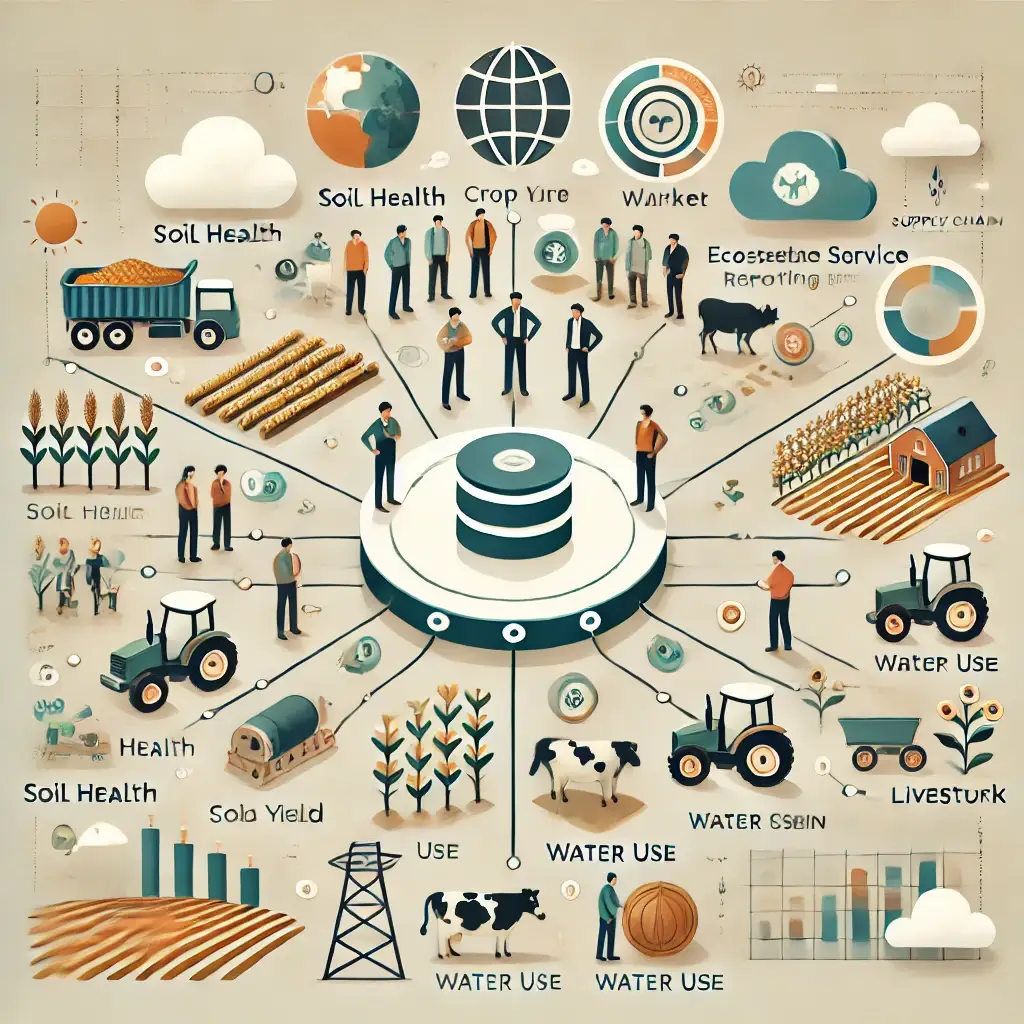In a world increasingly built on data, the question of who controls it—and how—isn’t abstract. It’s fundamental.
That’s especially true in agriculture, where producers generate massive volumes of data: from yield monitors to soil tests, grazing patterns to irrigation schedules. But most of that data ends up fragmented, unused, or captured by third parties with misaligned incentives.
Agricultural data co-ops offer an alternative.
What is an Ag Data Co-op?
An agricultural data cooperative is a member-owned organization where farmers pool their data in a shared infrastructure, with rules and governance that ensure the data is used to benefit the members themselves.
Think of it as a neutral data layer—built for interoperability, owned collectively, and structured for trust. Some co-ops focus on benchmarking and agronomic insights. Others are building platforms to support ecosystem services markets, supply chain transparency, or reporting against sustainability targets.
Why Now?
A few converging realities make this a critical time to pay attention:
- Farmers know their data has value. After years of platforms extracting insights and monetizing data with little return to producers, many farmers are actively looking for pathways to cash in—whether through ecosystem service markets, supply chain programs, or direct insights that improve operations. Co-ops create a structure where that value can flow back to those who generate it.
- Climate markets are scaling. From voluntary carbon markets to water quality credits and biodiversity claims, farmers are being asked to prove climate outcomes. But without reliable, standardized data pipelines, participation remains limited. Verification is slow. Trust is thin. Co-ops can help build the connective tissue needed for credibility and scale.
- Data fragmentation is a bottleneck. There’s no shortage of tools—just too many that don’t talk to each other. Every new pilot or platform risks creating more silos. Co-ops offer a way to coordinate across systems, reduce duplication, and ensure that producers retain control over how their data is used, shared, or sold.
- Reporting requirements are tightening. Programs like the Science Based Targets initiative (SBTi), Scope 3 emissions accounting, and climate-smart grant reporting all demand more and better data from the field. Agricultural data co-ops could serve as critical intermediaries—trusted enough for aggregators, accessible enough for producers, and governed in ways that align with both climate and community goals.
- Standardized data pipelines reduce risk for everyone. Co-op-managed data systems don’t just benefit producers—they create a reference network the private sector can use to reduce uncertainty in supply chains, sustainability claims, and risk modeling. That kind of common infrastructure is essential if we want climate-aligned markets to function at scale.
- The tech is catching up. With advancements in APIs, privacy-preserving protocols, spatial tagging, and decentralized governance, we finally have the infrastructure to build data systems that are both open and secure. There are a number of growing examples of folks thinking this way building tooling to help the movement. These include: NASA’s OpenET, Ag Data Gateway, Organic.Coop, Iunu, Merge Impact, AgLaunch, OpenTEAM, and more.
How Might This Shift the System?
A Bill and Melinda Gates Foundation and USAID report notes the limited uptake in the agricultural sector, but points to the promising opportunities and current hurdles. Ag data co-ops won’t solve everything. But they offer a few powerful levers:
- Aligning incentives. When the same group that generates the data governs its use, it reduces the risk of exploitation and increases the chance of value capture.
- Enabling participation. Shared infrastructure lowers the barrier to entry for ecosystem markets, compliance reporting, and innovation.
- Supporting climate sense-making. With enough scale, co-ops can create regional or national baselines, support modeling, and accelerate insights that currently get lost in silos.
Call to action
While cooperative systems have existed for a long time, we’re just at their nascency in how they can leverage data to empower the users. We’re tracking the emergence of agricultural data co-ops and supporting several pilot efforts. We are especially excited to be connected to a suite of sensory technologies providing valuable and immediate real time value back to farmers. If you want to stay in the loop—whether you’re a farmer, technologist, NGO, or just curious—sign up here:
👉 Join the Ag Data Co-op Interest List
This isn’t a sales list. Just updates, opportunities, and occasional reflections on where things in the ag data coop world might be heading—and how we can shape it together.
I asked Dall-E to make an image visualizing the idea. It came up with the below. Not horrible, but also not accurate. That’s kind of the beauty of when you get humans together with technology. You can see what you like about the outputs, and also notice what’s wrong.

